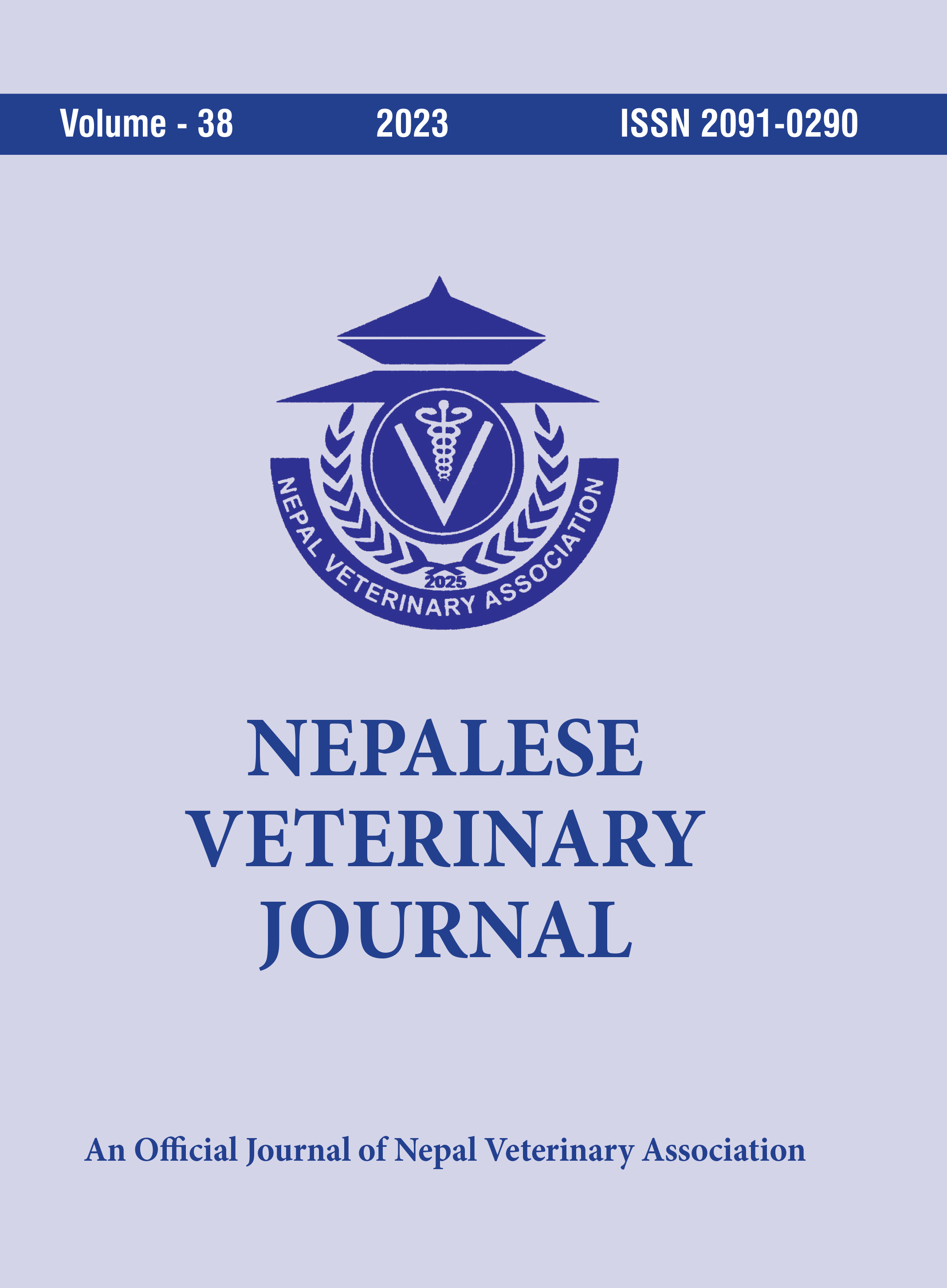Dhakeri-Bange Syndrome in Goats: A Clinical-laboratory Investigation
DOI:
https://doi.org/10.3126/nvj.v38i1.55874Keywords:
Moldy forage, Green fodder, Penicillium, Aspergillus Spp, Fungus, Mycoticpolyneuropathy, Banke, Antidegnala liquorAbstract
An outbreak of syndrome of unknown etiology associated with the feeding of moldy dry forage and green fodder among goats in Dhakeri village of Banke District on October-November 2008. Goats suddenly became ill with symptoms of knuckling of the fetlocks of the pelvic limbs, with no apparent ataxia or flexor weakness. Weight bearing was possible while the digits were extended, but with knuckling, weight was supported on the dorsal surface of the foot. The more severely affected goats were paraplegic and recumbent. Anorexia, apathy, diarrhea and ruminal stasis, flaccid posterior paralysis, hindlegs stretched forward both side of abdomin, paralysis of all four legs, head bented to sides, aimlessly head and rear shaking .On clinical examination based on history these goats were provisionally diagnosed as Dhakeri-Bange as being called locally and Endemic Mycotic polyneuropathy syndrome as seen first time in Nepal due to moldy forage/fodder poisoning in natural pasture were treated with Antidegnala liquor. On mycological and microbiological examination of tissue samples from post-mortem of dead goat and forage/fodder samples from pasture and goats feeding stalls on respective medium revealed the growth of fungal pathogens like Aspergillus and Penicillium spp with E. coli. These results provide circumstantial evidence that feeding of moldy forages and green fodder leaves infected by Penicillium and Aspergillus spp may cause outbreaks of a systemic Mycosis in these goats.
Downloads
Downloads
Published
How to Cite
Issue
Section
License
© Nepal Veterinary Association




